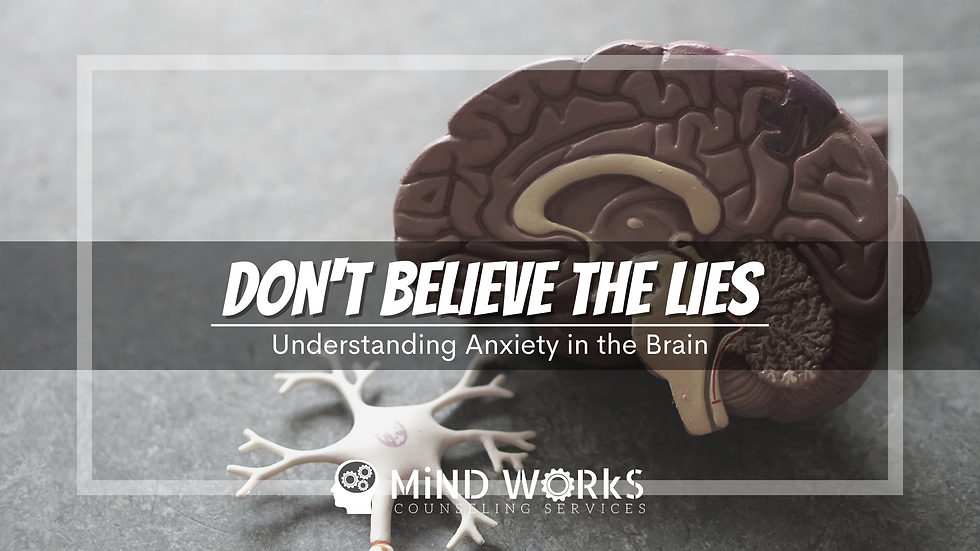Don't Believe the Lies: Understanding Anxiety in the Brain
- Joshuah Ellis, PhD, LPC

- Dec 15, 2021
- 3 min read
You know when you are driving and a car suddenly pulls out in front of you? Several things happen in your body during the next few seconds. Adrenaline is dumped into your system causing your field of vision to increase. The muscles in your body tighten up. You inhale sharply to get oxygen to your brain. You feel that odd twinge in your stomach. In that moment, your body switches into survival mode and as quickly as it comes over you, it starts to dissipate once you realize that there is no longer a threat to your safety.

This is one of our most basic animal responses to a stressful situation. When you perceive a threat, your body responds automatically. This is true for everyone; men, women, and children. It is completely normal.
But what does it mean when we experience these things in the absence of a threat? Maybe you are sitting at work, having dinner with your family, or about to drift off to sleep at the end of the day when all of a sudden you feel your body go into survival mode. The only difference between this and the scenario at the beginning of the blog is that this time, there is no threat.
This is how anxiety works in your brain. Your mind is convinced that there is a threat even if there isn’t one and your body responds. Maybe for you, this brings on panic attacks, sweating, fatigue, insomnia, or irritability. Perhaps you have even tried dealing with this through avoidance, anger, or drugs/alcohol. My guess is that if you are reading this blog, then those things aren’t working to well for you. So, I am going to give you a checklist for the next time your brain lies to you and tells you there is a threat.
1. Acknowledge what is happening.
You’re experiencing anxiety. It’s ok. It doesn’t mean anything about you. You are simply responding natural to a stimulus.
2. Identify the lie.
Anxiety (in this case) is your brain telling you that you aren’t safe when you are. Remind yourself that there is no real threat.
3. Breathe.
I know it seems obvious, but deep breathing gets oxygen into your bloodstream. Oxygen is a natural sedative. Breathe slow and deep for 1-2 minutes and your body will respond.
4. Give your mind something to focus on.
We use 5-4-3-2-1 grounding. Identify and name the following:
5 things you can see
4 things you can hear
3 things you can touch
2 things you can smell (or smells you enjoy)
thing you can taste (or a taste you enjoy)
This checklist may not get to the root of why you started to experience your anxiety, but it will help you calm down in the moment. To understand the depths of your anxiety, you might need to work with a counselor. Research clearly supports the reduction of anxiety related symptoms in men who engage in talk therapy.
At Mind Works Counseling Services in Lubbock, TX, we specialize in offering Anxiety Counseling for men and we use methods and theory that has shown to be conducive to male success in counseling. We know how anxiety affects the male brain and we are ready to help you take back some control in your life.
Learn more about the Anxiety Counseling services we offer.
Contact us to make an appointment or to let us answer any questions you may have.
.jpg)



Comments